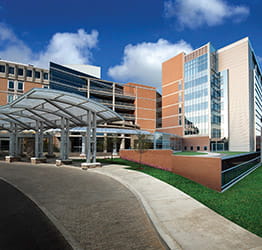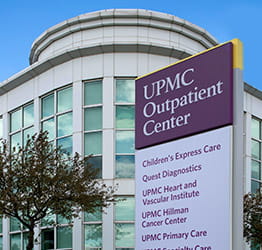A person with Cushing's syndrome has too much of a stress hormone called cortisol in their blood. There are many causes of excess cortisol, including cortisol-like medicines prescribed by your doctor.
Other causes of Cushing's syndrome include tumors throughout the body. The most common tumor to cause excess cortisol is a pituitary tumor, a condition called Cushing's disease.
Cushing's causes specific types of weight gain and other symptoms. Doctors diagnose it by testing cortisol levels and looking for the cause of high cortisol. It is very important to properly diagnose Cushing's, as it can not only dramatically impact appearance and quality of life, but can also shorten life span through secondary effects like diabetes, high blood pressure, heart disease, and problems with healing.
Once your doctor knows the cause, they can treat it. In the case of a tumor, surgery is usually the treatment. The diagnosis and treatment are best made by experienced endocrinologists (hormone specialists) and surgeons, usually in center of excellence.
On this page:
What Is Cushing's Disease?
Doctors define Cushing's disease as a pituitary tumor causing high cortisol levels. Cortisol is a hormone that can affect blood pressure, stress/energy levels, inflammation, and much more.
Hypercortisolism is when there is too much cortisol within the body. It can hurt a person's health.
What causes Cushing's disease?
Your body needs cortisol. It is part of your "fight or flight" response (this is why it is often called the stress hormone). But too much cortisol leads to problems.
The most common cause of Cushing's syndrome, other than medications, is a tumor in your pituitary gland. Called pituitary adenomas, these tumors are usually benign (not cancerous). The tumor on the pituitary gland tells the adrenal gland to make too much cortisol.
Other less common causes of Cushing's syndrome include:
-
Adrenal gland tumors.
-
Certain rare tumors in the pancreas or intestines.
-
Lung tumors, which may be cancer.
Overusing medicines with cortisol can also cause Cushing's syndrome (not disease/tumors). These medicines often treat asthma, rheumatoid arthritis, autoimmune diseases, or other illnesses that cause inflammation. This includes cortisone injections in joints or pills like prednisone or dexamethasone.
What are Cushing's disease risk factors and complications?
Cushing's disease risk factors
People may rarely get pituitary adenomas because of genetics, but often, there is no specific reason why they form.
Complications of Cushing's disease
Cushing's disease causes symptoms and long-term problems. People with Cushing's are at risk of:
Back to top.
What Are the Signs and Symptoms of Cushing's Disease?
Cushing's disease symptoms may include:
-
Decreased fertility and libido.
-
Extra hair growth and menstrual disorders (in women).
-
High blood pressure.
-
High blood sugar or diabetes.
-
Insomnia.
-
Moon-shaped face.
-
Muscle weakness.
-
Osteoporosis.
-
Personality changes or mood swings.
-
Poor healing of cuts, thinning skin, and easy bruising.
-
Skin changes include darkening, purple stretch marks, acne, or easy bruising.
-
Tiredness or fatigue.
-
Water retention or swelling.
-
Weight gain of the upper body and trunk.
Back to top.
How Do You Diagnose Cushing's Disease?
Your doctor will diagnose Cushing's disease by asking about your symptoms and testing your blood, urine, and/or saliva for excess cortisol.
Diagnosing Cushing's disease relies on a range of tests showing high levels of cortisol. If tests show that cortisol levels are above normal, your doctor must find out why in order to figure out the best treatment plan.
Back to top.
How Do You Treat Cushing's Disease?
If medication is causing Cushing's syndrome, the treatment may include reducing the dose or switching medications.
For Cushing's disease caused by a pituitary tumor, the best treatment is to remove it with surgery. In rare cases with residual tumor that is not removable, other options include Gamma Knife® radiosurgery and medications.
Minimally invasive surgery for Cushing's Disease
At UPMC, doctors treat Cushing's disease by taking out the tumor with surgery. The least invasive and most complete option for this surgery is the endoscopic endonasal approach (EEA).
This state-of-the-art approach is minimally invasive. It allows surgeons to access the tumor through the nose without any skin incision. Surgeons then take out the tumor through the nose and nasal cavities.
Benefits of this approach:
-
Better ability to completely remove the tumor.
-
Faster recovery time.
-
No incisions to heal.
-
No outside scars.
Gamma Knife® radiosurgery for Cushing's disease
You may need radiation for your tumor after surgery if there are areas that are too stuck to an artery or nerve to be safely removed. This treatment can begin soon after surgery. Your surgeon may recommend Gamma Knife® radiosurgery.
Doctors may use Gamma Knife treatment for Cushing's disease if cortisol is still high after surgery. There may be some tumor cells left, causing lingering symptoms. Radiosurgery uses hundreds of radiation beams focused on the tumor that kills the remaining cells.
UPMC is the nation's leading provider of Gamma Knife treatment. More than 12,000 people with tumors, vascular malformations, pain, and other health problems have had Gamma Knife surgery at UPMC.
Medicine to treat Cushing's disease
A number of medications can treat Cushing's. There are medications that act at the pituitary gland that can be used for Cushing's disease. There also are medications that act at the adrenal gland (to prevent cortisol from being made) and medications that block the action of cortisol.
UPMC is also a site for international studies investigating new potential therapies for Cushing's.
Back to top.
By UPMC Editorial Staff. Last reviewed on 2024-10-18.
















